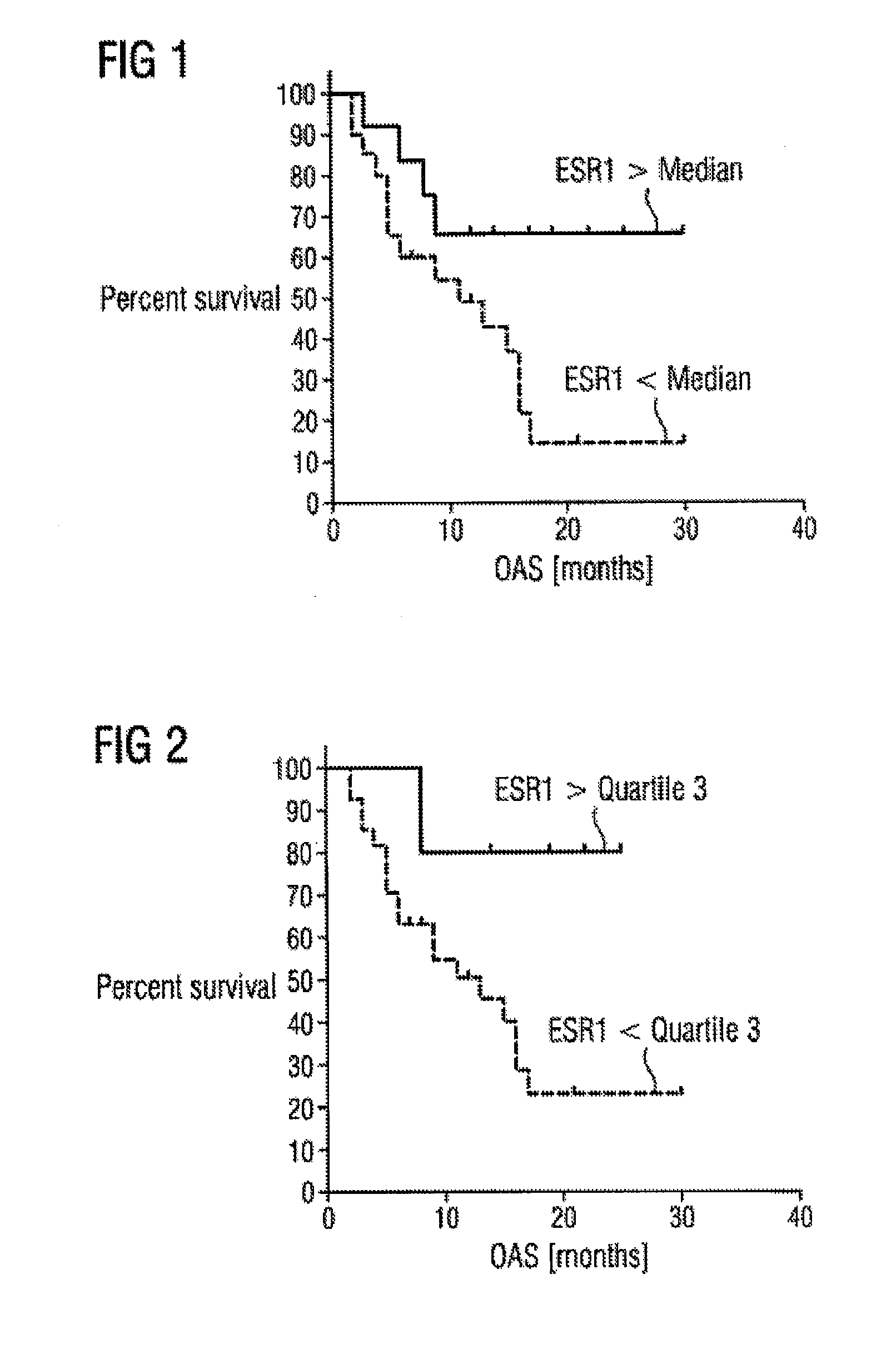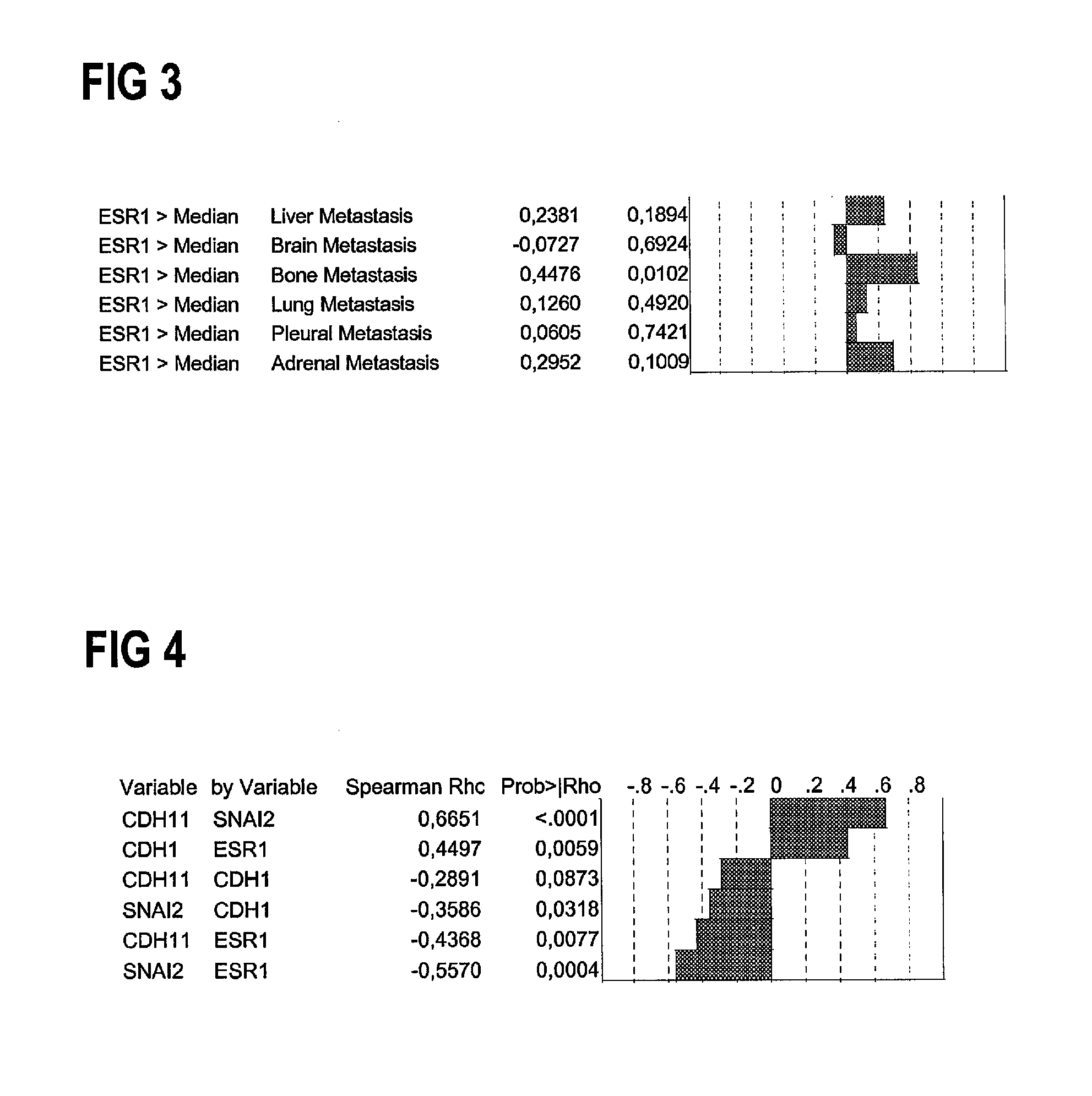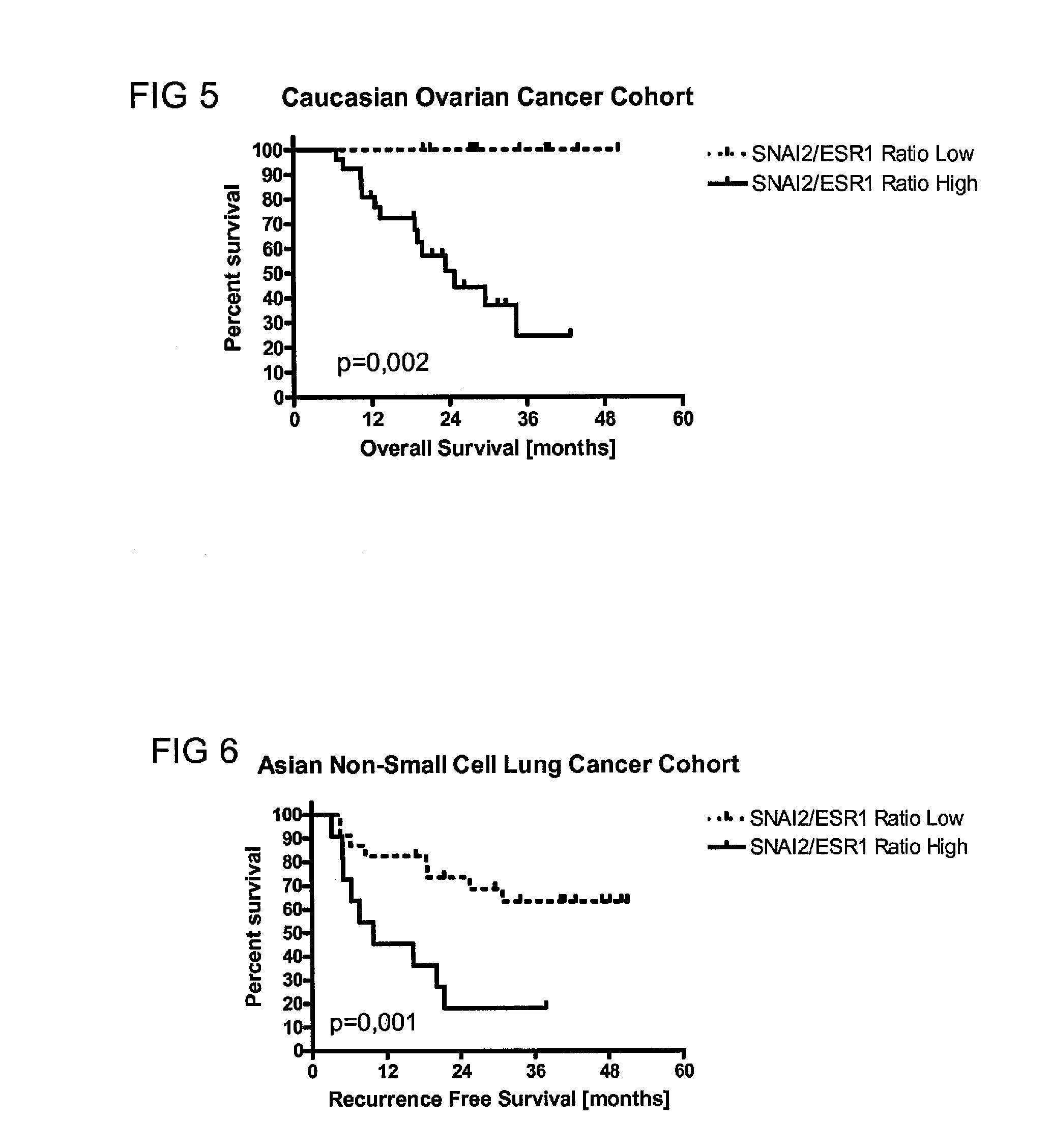Method to assess prognosis and to predict therapeutic success in cancer by determining hormone receptor expression levels
- Summary
- Abstract
- Description
- Claims
- Application Information
AI Technical Summary
Benefits of technology
Problems solved by technology
Method used
Image
Examples
example 2
Determination of ESR1 Expression Using RT-PCR in a Lung Cancer Patient Cohort
[0259]Hormone receptor RNA expression of ESR1, ESR2, PGR, AR was analyzed by Affymetrix array technologies and kPCR technologies by employing a standardized RNA-extraction method based on proprietary magnetic beads from Siemens Healthcare Diagnostics and using standard Taqman® PCR Methodology on the ABI7900 PCR system. Fresh tissue biopsy samples and tumor resectates of stage III and IV small cell and non small cell lung cancer patients kPCR from a non-stratified, population based cohort treated with chemotherapy (n=83) were analyzed.
[0260]By correlation analysis, it was surprisingly found that overexpression of ESR1 as assessed by Affymetrix and kPCR analysis indicates good prognosis of lung cancer patients treated by standard chemotherapy as indicated by prolonged disease free and overall survival. ESR1 expression displayed a broad range of relative copy number (2.5 logs) as determined by standard kPCR te...
example 3
Determination of ESR Expression Using RT-PCR in NSCLC Patient Cohort
[0261]By correlation analysis, it was surprisingly found that overexpression of ESR1 as kPCR analysis indicates good prognosis of non small cell lung cancer (NSCLC) patients (male and female Caucasian patients) treated by standard chemotherapy as indicated by prolonged disease free and overall survival. ESR1 expression displayed a broad range of relative copy number (2.5 logs) as determined by standard kPCR technologies after normalization to various housekeeping genes (RPL37A, GAPDH, RPL13, HPRT1, CALM2) in the populations based cohort (n=35) of patients with NSCLC. By taking technical cut-offs like the median and tertiles, it was shown that high expression is related to prolonged survival. Results for ESR1 expression greater or lower than median are shown in FIG. 1. Patients stratified according to ESR1 expression above or below the third quartile of ESR1 expression are shown in FIG. 2. The majority of patients we...
example 4
Correlation of ESR1 Expression Determined by Using RT-PCR with Site of Initial Metastasis in NSCLC Patient Cohort
[0262]By correlation analysis, it was surprisingly found that high ESR1 expression positively correlates with development of bone metastasis also in NSCLC patients as depicted in FIG. 3. In addition, metastasis to the adrenal gland trends to be significantly associated with adrenal metastasis, which is in females the major source of androgens. Tropism of hormone receptor positive NSCLC cells towards the endocrine gland has not been described before but is in line with the surprising finding that a subtype of NSCLC cells derives growth advantage from hormones such as androgens or its derivatives (estrogen).
PUM
| Property | Measurement | Unit |
|---|---|---|
| Ratio | aaaaa | aaaaa |
| Level | aaaaa | aaaaa |
Abstract
Description
Claims
Application Information
 Login to View More
Login to View More - R&D
- Intellectual Property
- Life Sciences
- Materials
- Tech Scout
- Unparalleled Data Quality
- Higher Quality Content
- 60% Fewer Hallucinations
Browse by: Latest US Patents, China's latest patents, Technical Efficacy Thesaurus, Application Domain, Technology Topic, Popular Technical Reports.
© 2025 PatSnap. All rights reserved.Legal|Privacy policy|Modern Slavery Act Transparency Statement|Sitemap|About US| Contact US: help@patsnap.com



